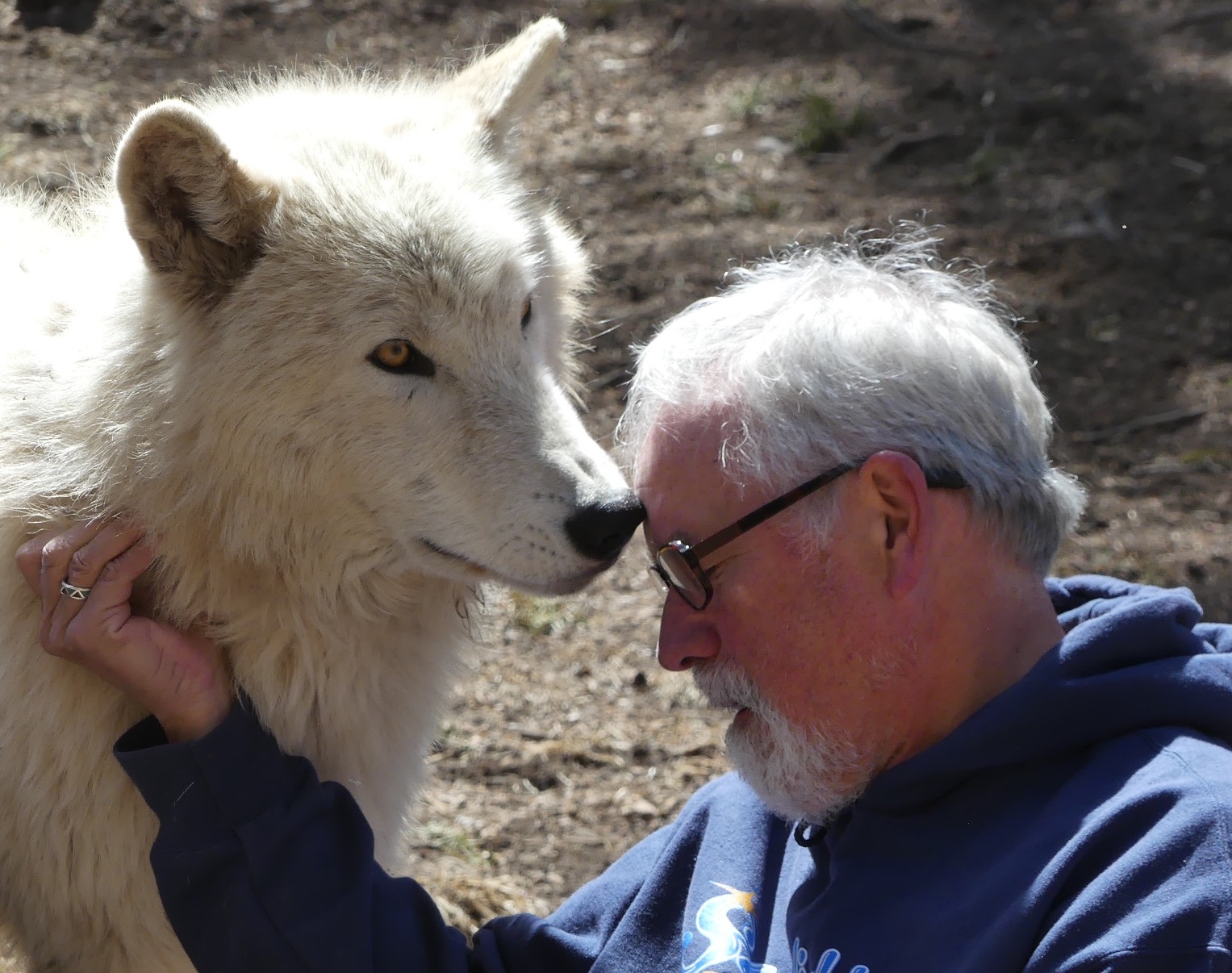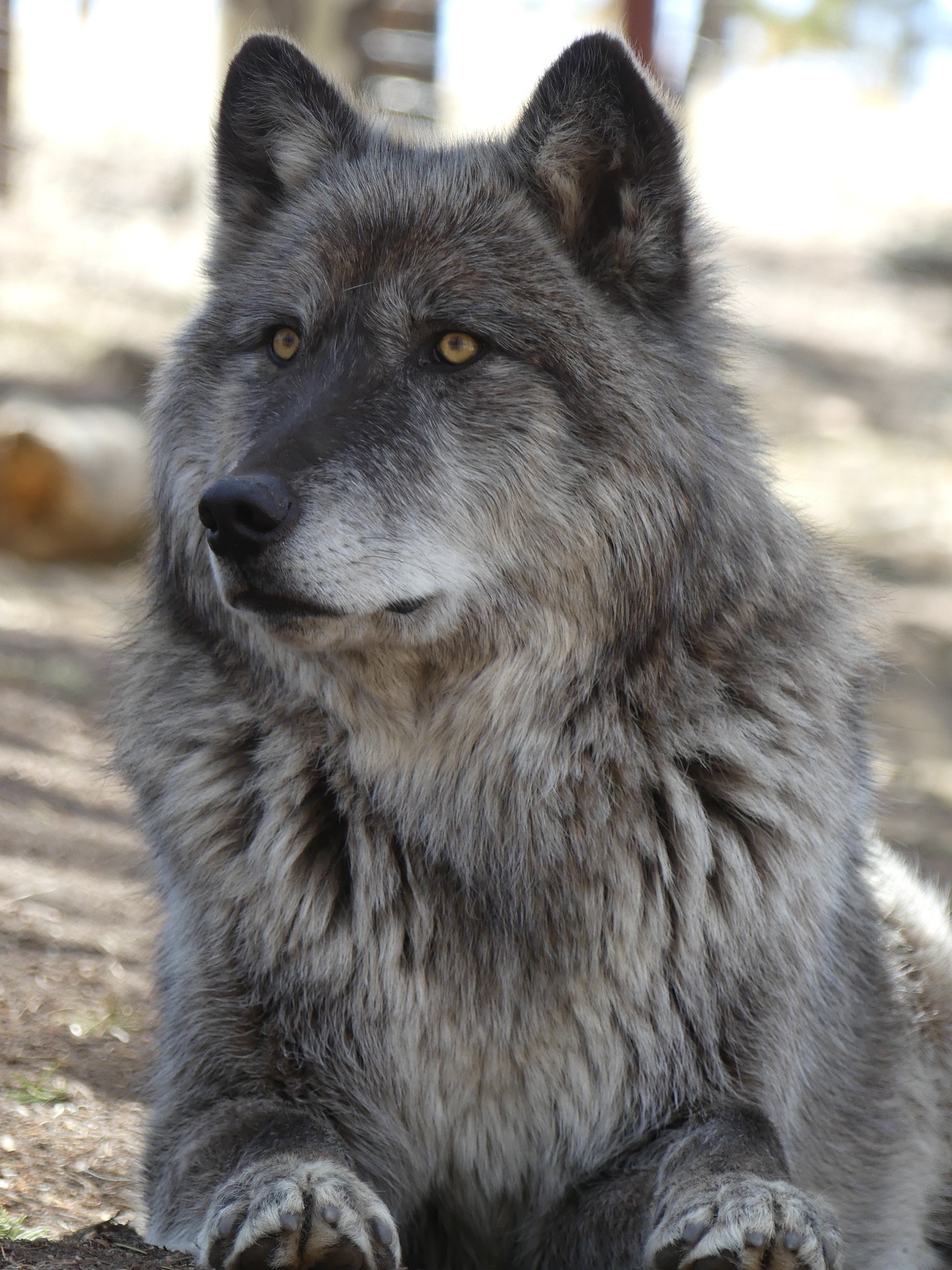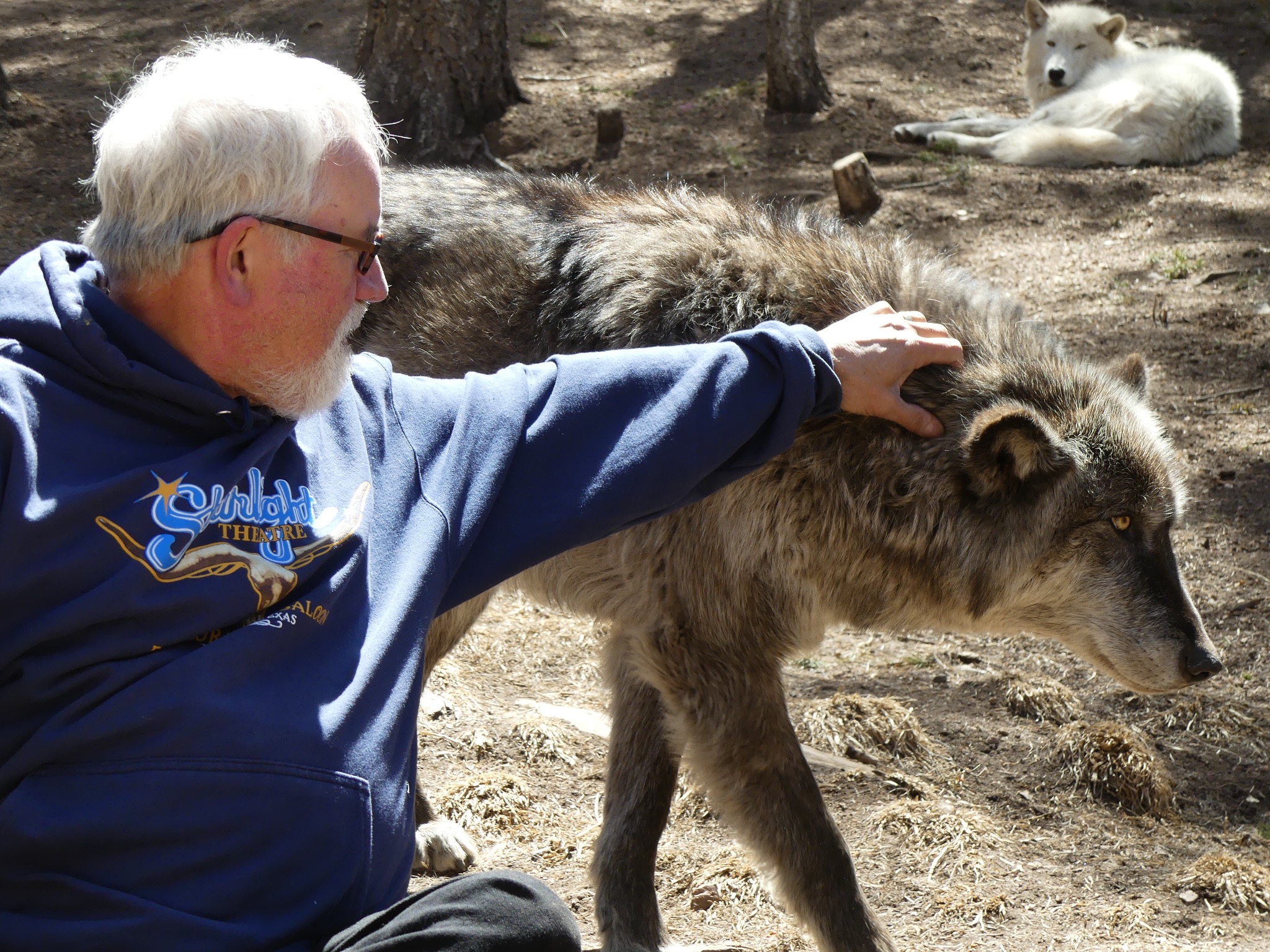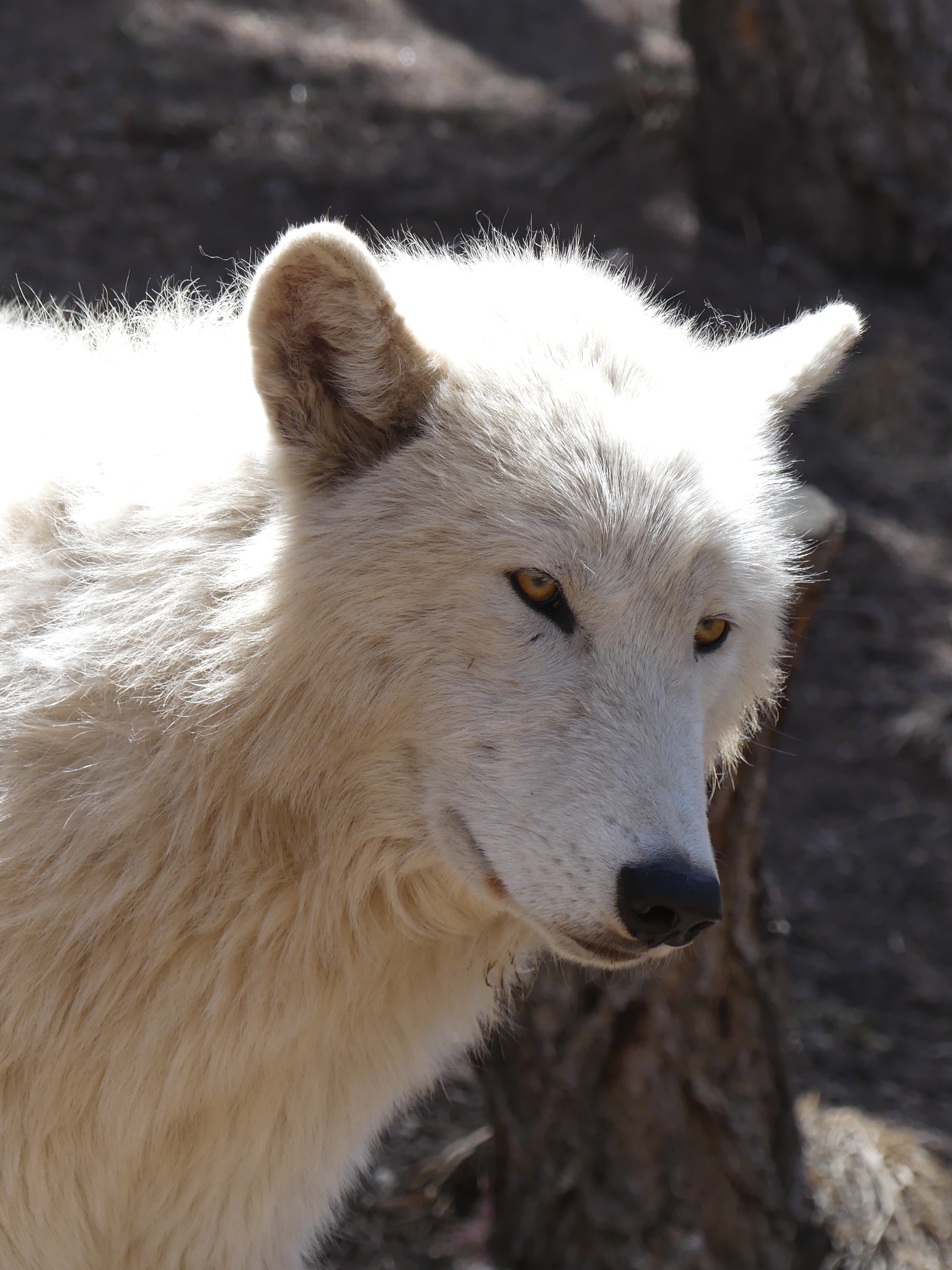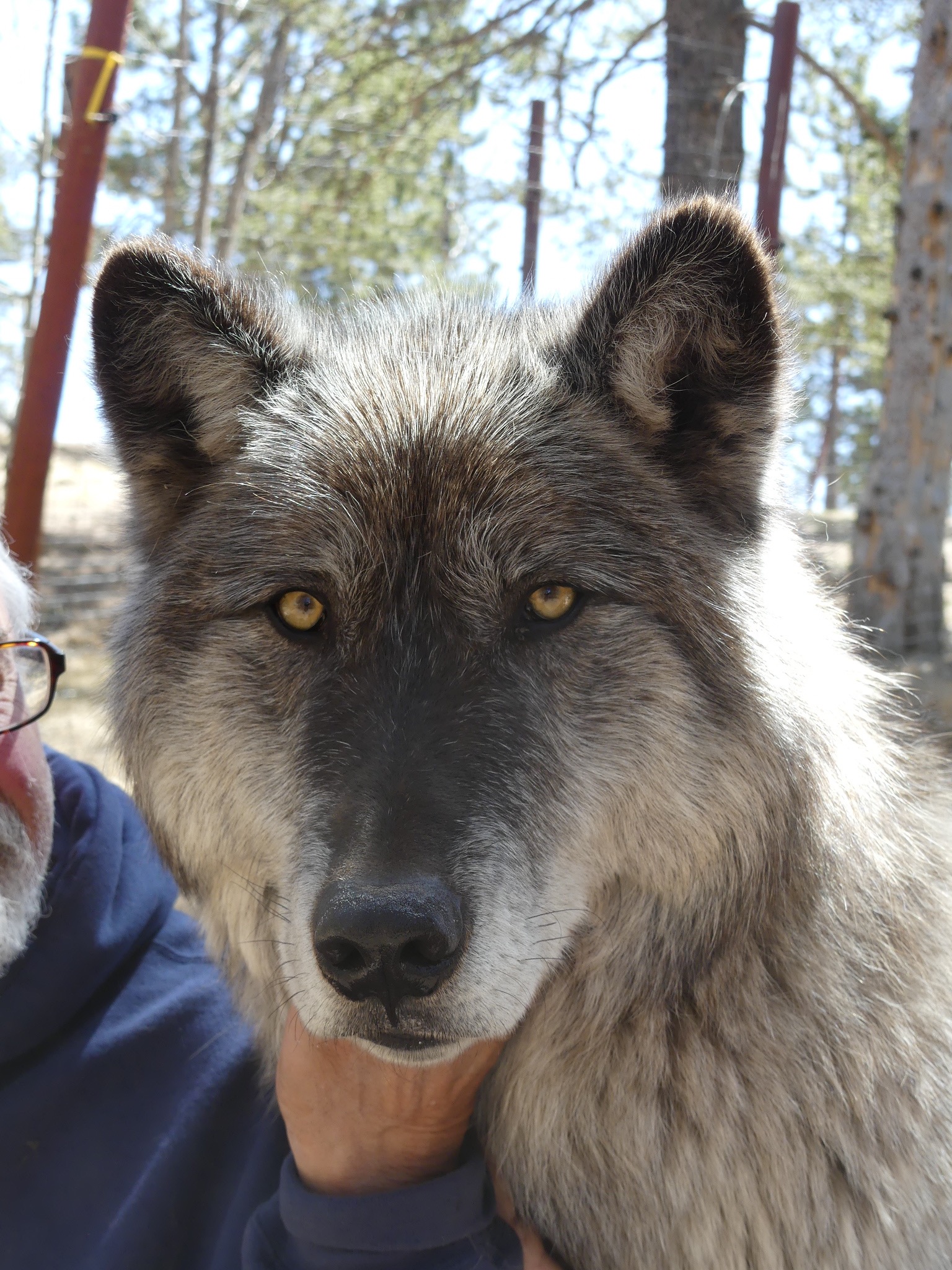Dancing with wolves
Sharing the call of the not-so-wild
By Rick Holmes
May 25, 2018
Divide, Col. -- Children are taught to hate and fear the wolf from the time they are toddlers. A wolf tries to eat the Three Little Pigs, another deceives Little Red Riding Hood. In movies, the full moon turns good men into evil werewolves. Such stories, which grew from the threat of predators to domestic animals, led to wolves being hunted nearly to extinction in Europe and North America.
But in person – and in photographs taken from a safe distance – wolves remind us of our favorite pets. They are cute and soft and playful as pups, handsome and strong when fully grown. Their howls are romanticized into the call of the wild.
Wolf-lovers seek them out, in zoos and in the wilderness. Wolf-watching in the Yellowstone National Park area has grown to a $35 million business. Wolf sanctuaries have sprung up across the country where visitors can get up close and personal with predators.
Sanctuaries, like the Colorado Wolf and Wildlife Center here in the shadow of Pike’s Peak, are about preservation, education and advocacy. They provide a home for animals that cannot be returned to the wild. Some are refugees from the illegal wild animal trade. Some come from “accidental litters” in zoos that can’t support their care. Some come from other sanctuaries, or from backyard breeders who discover too late that wolves make bad pets.
Wolves can never be housebroken, guide Samantha Songer explains, and can’t be taken to the local dog park. They are wild animals, she says as she escorts us into the enclosure where three male wolves are waiting. They won’t hurt you, she assures us, but it’s best not to wear scents, leather or anything that might attract their enthusiasm.
Wolves are not dogs, as I found out during my hour in the enclosure. Wolves trained to be comfortable with humans will come to their caretakers for bits of raw meat. They will put up with their backs being scratched, if you keep them at arm’s length. They’ll check you out, even sniff around your face, if you’ve got a handful of kibble you’ll share with them. They don’t wag their tails when they see you coming, at least they didn’t for me. They don’t beg for the food, they hunt for it. There’s no affection in their cold dark eyes.
Sanctuaries like this are dedicated to restoring wolves in the wild, but in practice turn them into something a lot like pets. The wolves are given human names – we hung out with Keyni and Raksha. The guides have tricks to get wolves to pose for photos with visitors who pay handsomely for the VIP tour that gets them inside the enclosures. When the wolves caught the bits of raw meat thrown to them buy the staff, it reminded me a little of the trained seals at Sea World being rewarded for their tricks.
At the end of the tour, visitors are led in a wolf howl, and the wolves in their fenced enclosures respond with howls of their own. It is the call of the not-so-wild.
These magnificent creatures ought to be living in the real wild, fending for themselves, not posing for photos with visitors. And there is a growing body of research showing that wild places need them.
When wolves were re-introduced in Yellowstone 70 years after they had been wiped out, they brought equilibrium to an ecosystem that had suffered without them. The wolves moved along elk herds that had overgrazed parts of the park, leading to erosion and a loss of habitat and wildlife. In what scientists call a “trophic cascade,” grasses and trees came back, stabilizing the banks of rivers and streams. Birds returned, and beavers, whose dams created habitat for fish, otters and other mammals. By one tally, 350 species returned to Yellowstone after wolves were brought back into the mix.
That success has encouraged the friends of wolves to push their reintroduction in other areas where they’d been hunted out of existence a century before. But wolves have enemies as well as friends. There are hunting groups, who have long lobbied to take wolves off the endangered species list. There are ranchers who see wolves as a threat to their livelihoods. They convinced state legislatures in Idaho, Montana and Wyoming to create hunting seasons for wolves. Agricultural interests have resisted efforts to re-introduce wolves to protected areas in Colorado.
The tug-of-war over wolves in the upper Midwest popped up in Congress earlier this year, when a rider was attached to an omnibus spending bill that would have taken Wisconsin wolves off the endangered species list. Conservationists mobilized in opposition and the provision was removed.
But the wolf wars will continue, in Congress, state legislatures and courts, because the goals of the wolves’ friends and enemies are at cross purposes and because of the contradictory nature of the beasts themselves. They are wild enough to take down elk – and cattle – several times their size, but tame enough to welcome humans into fenced sanctuaries. They can restore equilibrium to an ecosystem or ruin the bottom line for a rancher on the edge of a national park.
After a long time on the brink of extinction in America’s lower 48 states, wolves are coming back – but we’re still not sure exactly how to handle them.
Rick Holmes can be reached at rick@rickholmes.net. You can follow his journey at www.rickholmes.net. Like him on Facebook at Holmes & Co, on follow him on Twitter @HolmesAndCo.
